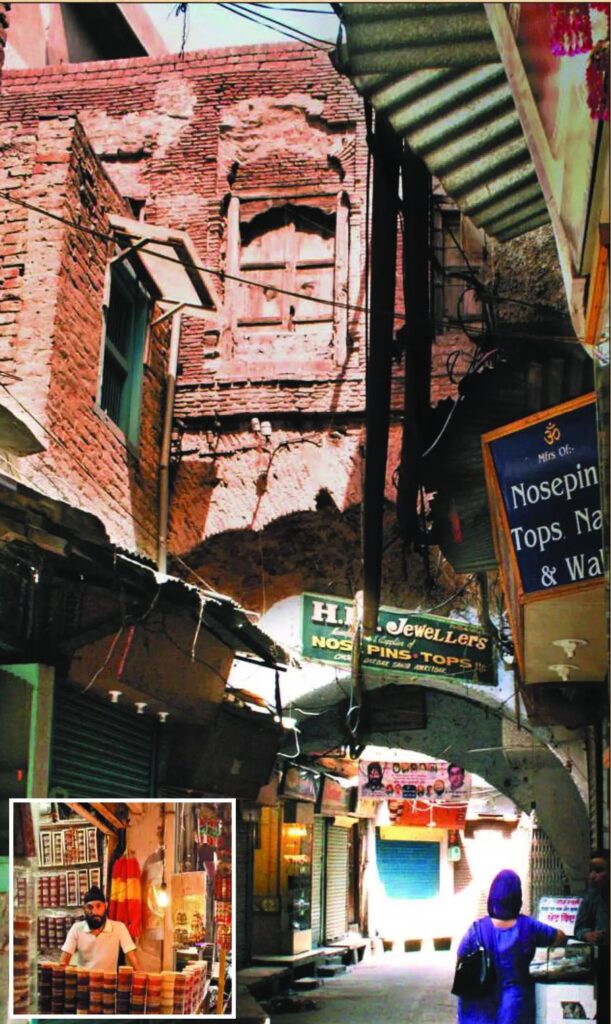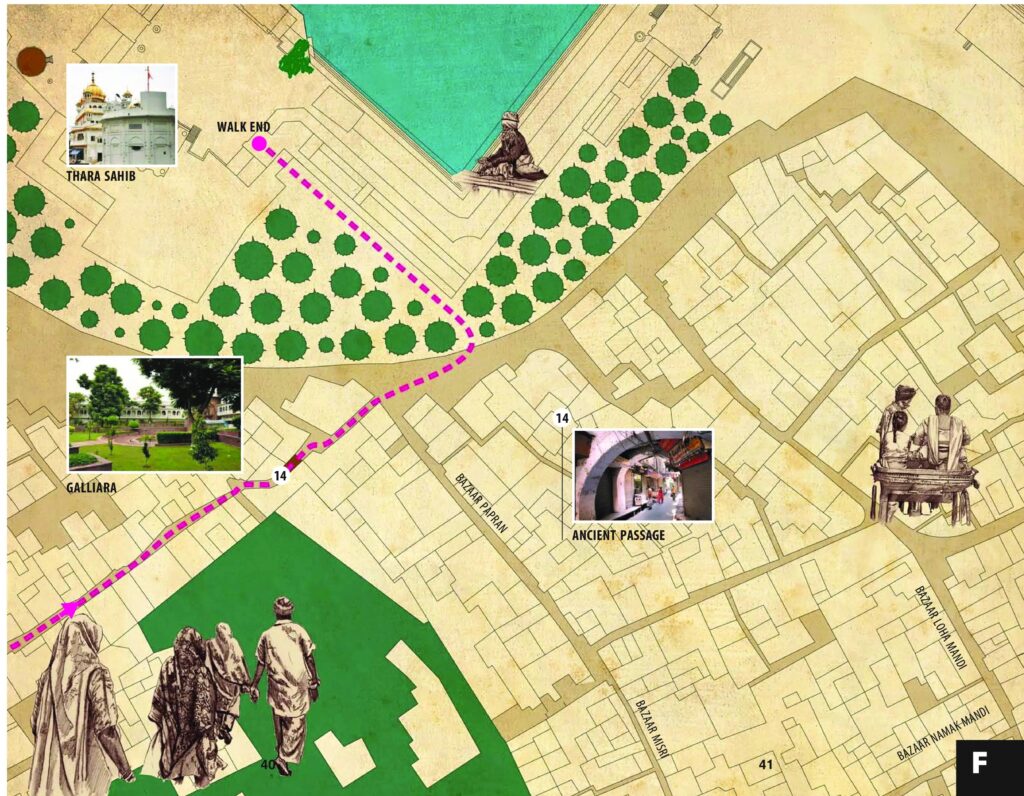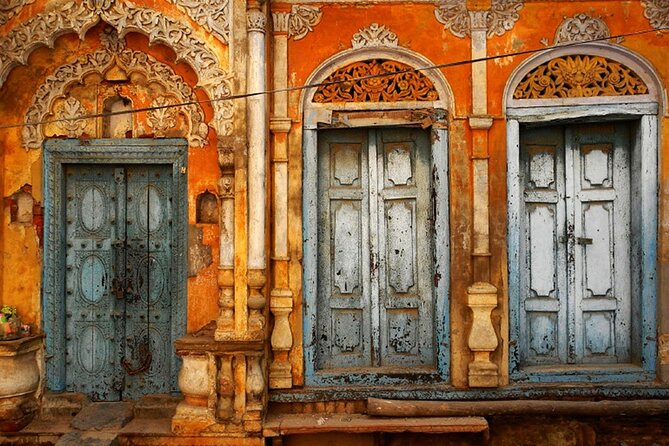Explore the enchanting heritage of Amritsar with our guided Heritage Walk, delving into the labyrinth of narrow lanes and bylanes of this ancient city, steeped in a 400-year-old history. Discover the architectural marvels of Katras, Akharas, Bungas, Havelis, and Hattis, reflecting the traditional town planning and craftsmanship of yesteryears. Immerse yourself in the timeless charm of traditional trades and crafts, still flourishing in their original settings, preserving centuries-old practices.
But what truly captivates the senses are the renowned intricately carved wooden facades, leaving you in awe of their exquisite beauty. This journey through time offers a unique opportunity to connect with the soul of Amritsar, a city pulsating with sacred energy and vibrant culture.
Welcome to Ramdaspur, welcome to Amritsar – where every corner echoes with the rich heritage of Guru Di Nagari. Join us as we unveil the treasures of this sacred city, inviting you to become a part of its captivating narrative.
Table of Contents
3. Punjab National Bank Building (formerly Lal Haveli) 2
7. Udasin Ashram Akhara Sangalwala. 3
8. Chitta Akhara (Ganga Ram Akhara) 3
14. Thakurdwara Raja Tej Singh. 4

1.HISTORY OF AMRITSAR
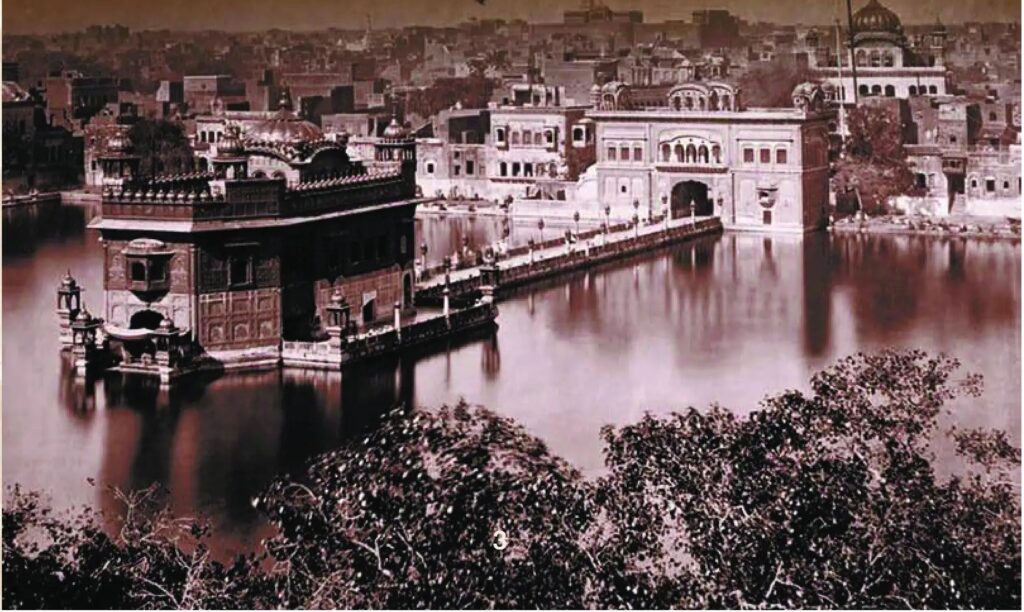
Amritsar, a city steeped in rich history and cultural significance, traces its roots back to the 16th century when it was founded by Sri Guru Ramdass, the fourth guru of the Sikhs. The area, once dense with forests and lakes, saw its transformation into a bustling city when Guru Ramdass invited 52 traders from nearby regions to settle, kickstarting the city’s development.
The construction of the iconic Amrit Sarovar, now synonymous with the city’s name, began under Guru Ramdass and was completed by his successor, Sri Guru Arjan Dev. The Harmandir Sahib, or Golden Temple, was then established in its midst, becoming a spiritual and architectural centrepiece.
Following the era of the Sikh gurus, the city witnessed a period of political upheaval with various Sikh misls or confederacies vying for control. Notable among these were the Ahulwalia, Ramgarhia, Kanhiya, and Bhangi misls, each leaving their mark on Amritsar’s landscape.
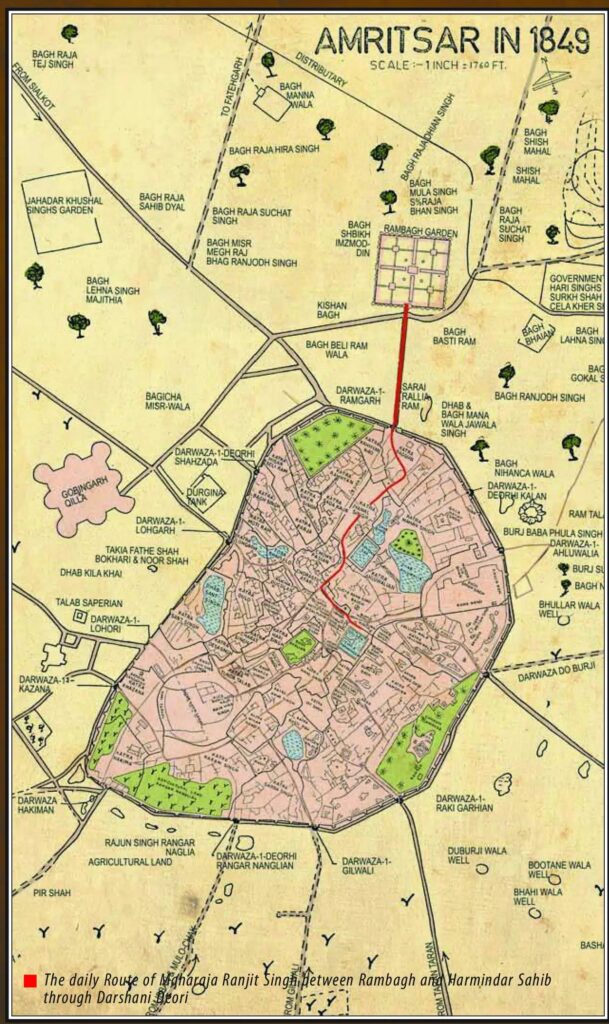
Maharaja Ranjit Singh’s ascendancy marked a significant chapter in Amritsar’s history. He unified the misls, fortified the city, adorned the Golden Temple with gold, and erected landmarks like the Gobindgarh Fort and Ram Bagh Palace.

However, British colonial rule reshaped the city’s landscape. The British demolished outer walls, constructed administrative buildings like the Town Hall, and renamed landmarks such as Ram Bagh garden to Company Bagh. Yet, they also contributed to its architectural legacy with structures like the Khalsa College, designed by renowned architect Ram Singh.
Despite these changes, Amritsar retains its cultural vibrancy, showcased through its exquisite woodwork, traditional architecture, and status as the cultural capital of Punjab.

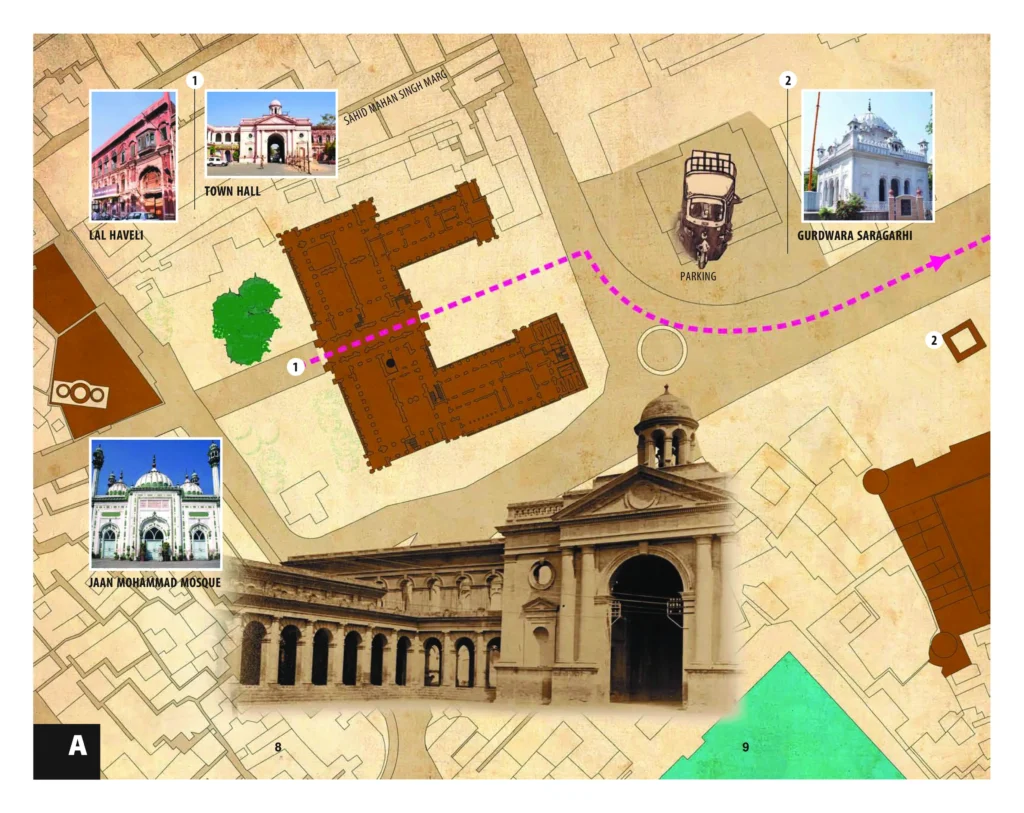
1. Town Hall: Constructed in 1866 by the British, the Town Hall stands as a testament to Amritsar’s colonial past. Once the nucleus of British administration, it hosted lively evening gatherings with live music echoing through its grounds. Today, it continues to be a significant presence, housing the Motilal Nehru Library and preserving its grandiose architecture.
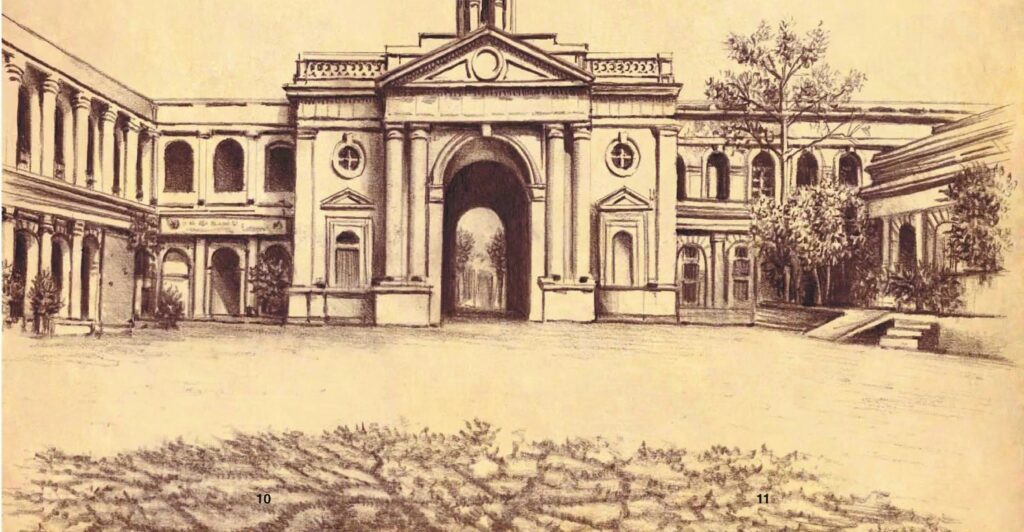
2. Jaan Mohammad Mosque: Adjacent to the Town Hall, this mosque, built in 1872, reflects the city’s diverse cultural fabric. Its founder, Mian Jaan Mohammad, settled in Amritsar, drawn by its allure. Today, the mosque stands as a symbol of peaceful coexistence and religious harmony.
3. Punjab National Bank Building (formerly Lal Haveli): Formerly known as Lal Haveli, this building has transitioned from housing an oil and perfume factory to hosting Punjab National Bank. Its rich history speaks of entrepreneurial spirit and global commerce, reflecting Amritsar’s economic dynamism.
4. Gurdwara Saragarhi: A shrine commemorating the valor of twenty-one soldiers who bravely defended their post in 1897, Gurdwara Saragarhi stands as a testament to courage and sacrifice. Their heroic stand against overwhelming odds is celebrated annually, honoring their legacy of bravery.
5. Qila Ahluwalia: Once the stronghold of Ahluwalia Misl, this fort bears witness to the region’s turbulent history. Today, it stands amidst bustling commercial activity, adorned with colonial-era architecture, serving as a reminder of Amritsar’s resilience and endurance.
6. Jalebiwala Chowk: A bustling hub of commerce and culinary delights, Jalebiwala Chowk is synonymous with delectable jalebis. Since 1956, it has delighted taste buds with its mouth-watering treats, symbolizing the city’s love for gastronomy and celebration.
Amidst these historical landmarks, Amritsar’s spirit of unity and resilience shines bright, inspiring generations with its timeless tales of valor and camaraderie. As we delve into its rich tapestry of history and culture, let us cherish and preserve the heritage that makes Amritsar truly special.

7. Udasin Ashram Akhara Sangalwala Founded in 1771, the Udasin Ashram Akhara Sangalwala, originally named Nirvan Akhara, offers a serene retreat for Sadhus, Yogis, and Holy men. Nestled amidst tranquil surroundings, it began with daily meditations under a solitary tree by its founder, Nirvan Priyatam Dass. Today, this underground cave serves as a hub for religious education, attracting seekers from far and wide.
8. Chitta Akhara (Ganga Ram Akhara) Established in 1781 by Mahant Ganga Ram, the Chitta Akhara stands as a testament to architectural grandeur. Adorned with intricate stone carvings and vibrant paintings, this ancient sanctuary holds an ancient tomb within its walls, offering a glimpse into the city’s rich history and spiritual legacy.
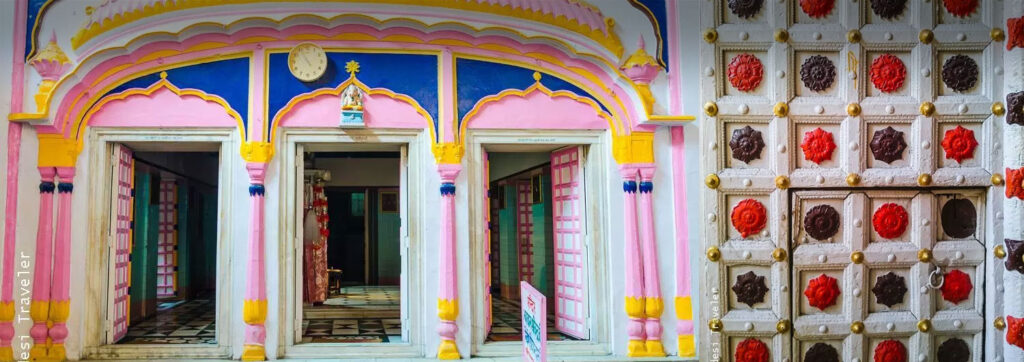

9. Darshani Deori Offering a picturesque view of the Golden Temple, the Darshani Deori marks the sacred spot where Sri Guru Arjun and Sri Guru Hargobind once stood. Over time, it has evolved into a symbol of beauty and reverence, with its ornate ceiling adding to its allure.

10. Baba Bohar Amidst the bustling Bartan Bazaar stands the majestic Baba Bohar, a sacred Banyan tree revered for its myriad benefits. From providing shelter to fostering spiritual contemplation, this ancient tree has stood the test of time, its presence intertwining with the city’s rich heritage.
11.Thakurdwara Dariana Mal Step into the enchanting courtyard of Thakurdwara Dariana Mal and be transported to a bygone era of colonial charm. Adorned with intricate frescoes depicting Hindu mythology, this architectural marvel pays homage to Lord Krishna, inviting visitors to immerse themselves in its rich history and divine ambiance.
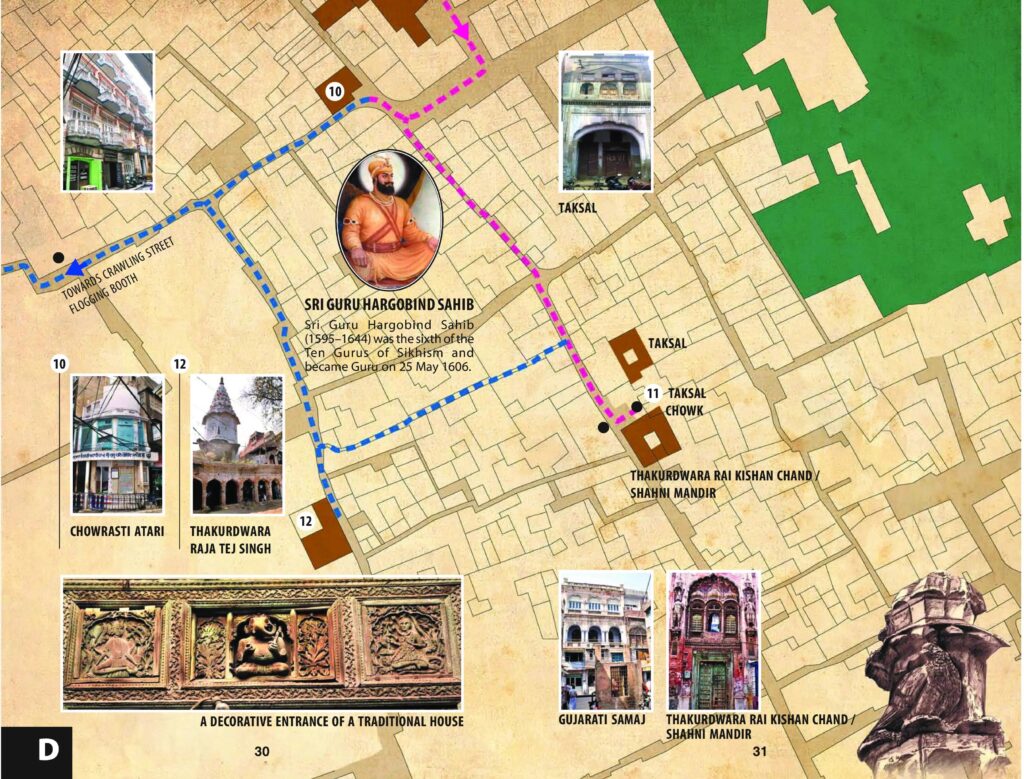
12.Chowrasti Atari Built by Sri Guru Hargobind Sahib in the early 1600s, the Chowrasti Atari complex beckons with its rich heritage and vibrant atmosphere. Home to artisans and traders, it served as a hub for spiritual discourse and community gatherings, embodying the essence of Amritsar’s cultural tapestry.
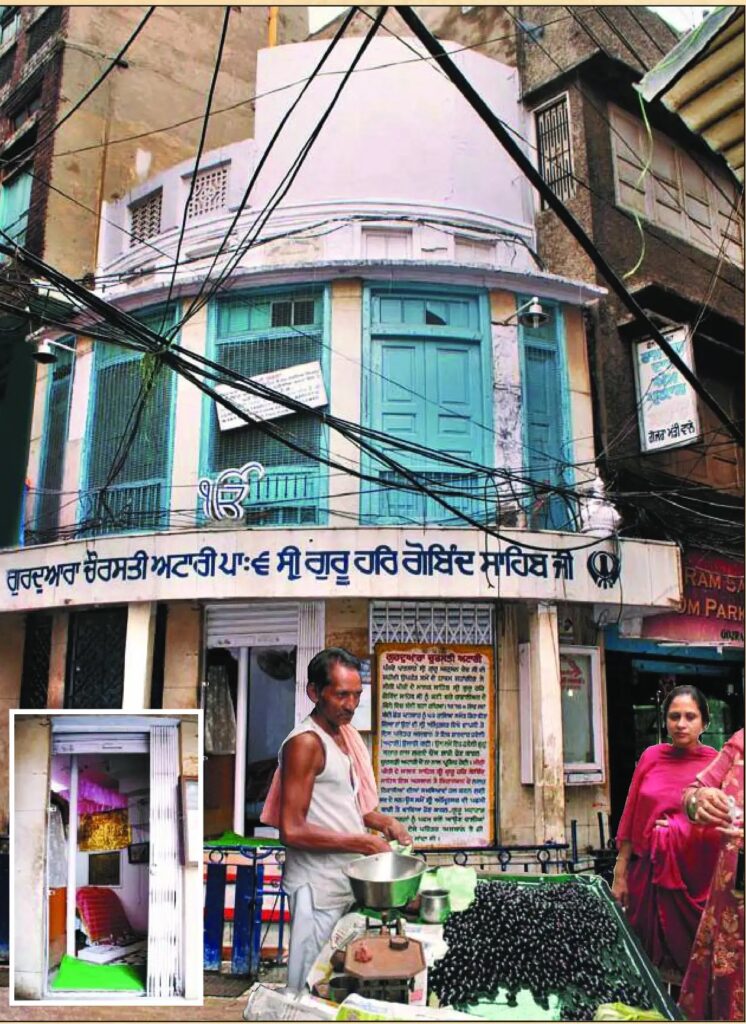
13.Taksal Mint: Located at Katra Hari Singh, Amritsar’s first mint holds a fascinating history. Established during the Sikh regime, coins dedicated to Maharaja Ranjit Singh’s queen, Moran, were once struck here. These coins, known as Moranshahi coins, featured charming peacock motifs, but faced opposition from the Golden Temple priests due to religious concerns.

14. Thakurdwara Raja Tej Singh: Constructed in 1851 by Raja Tej Singh, this historic site in Katra Jamadar showcases architectural beauty. While the original structure has undergone renovations, its significance in preserving Amritsar’s heritage remains intact.

15.Crawling Street: This street witnessed a pivotal moment in history during the British rule. Following an incident involving British missionary Ms. Marcella Sherwood, General Dyer ordered a decree forcing Indians to crawl on their hands and knees through Kucha Kurrichhan street. Failure to comply resulted in severe punishment, highlighting the oppressive nature of British rule.

16.Ancient Passage: Serving as a vital gateway between various neighbourhoods in old Amritsar, this ancient passage embodies the city’s cultural heritage. Home to the famous Chudi Bazaar, where traditional wedding ornaments like “Churas” and “kaleerans” are sold, it remains a popular destination for locals and tourists alike.
